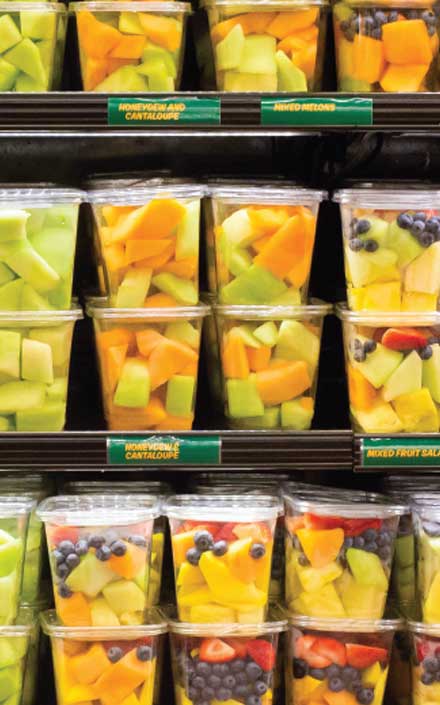Stringent safety regulations make it tough to get creative when shipping food and beverage products. That's where Evans' extensive experience in this precise area comes in. Hear from Evans' GM and resident freight genius, Charles Miller, on how to save on food and beverage transportation while maintaining high safety and quality standards.
[begin video transcript]
I'm Charles Miller, GM at Evans Transportation.
Food manufacturing providers run into very common issues: claims management, food safety requirements, and cost.
How can a 3PL reduce those pain points?
One of the best ways for third-party logistics provider to help reduce risk in a supply chain for food manufacturing is to consolidate shipments — move them from an LTL environment into a volume or truckload environment where they’re in a sealed trailing unit.
How can food manufacturers prepare for consolidation?
You know, there are a lot of things food manufacturers can do to help drive consolidation, on the inbound side in particular.
It's important to develop a structured manner in which purchase orders are sent and received. That means instead of receiving one small order every day or every other day, maybe only ship on Mondays or Wednesdays. Pick a day of the week; consolidate those shipments into one larger order; then, from your regional supplier base, try and develop some opportunities to do multiple pickups or a pool consolidation point. Move that into a different mode, and you'll find a lot more success.
What are the benefits of multi-vendor consolidation?
Certainly anytime you can find vendors in a similar geographic area, you can do a lot of great things and develop that volume — develop them as future customers as well to obtain more freight.
So, the idea there is to reduce the number of different carriers that are picking up the same product. If you can create your own freight ecosystem, you if you have a lot more flexibility to improve the food safety requirements, reduce cost, increase visibility, and reduce dock congestion. That's going to help on your production planning and on the floor.
What are the pros and cons of LTL in food transportation?
LTL — in the food ingredient business in particular, but food manufacturing in general — there's a lot of different areas where this can be a struggle. One is the appointment process. A lot of times on the end-user side this can be extremely challenging.
The use of lumpers, the additional cost of lumpers, how to manage that entire process of payment and then recovery of payment: there are so many issues with LTL in particular beyond just that on-time delivery is not that of full truckloads. It's just common knowledge LTL doesn't deliver at the 98% that truckloads do. So, you have chargebacks. You have so many different items that [stem from] LTL not being built for the food business.
And those rules continue to get more and more challenging for LTL. It's really going to take a unique idea and approach to try and solve those on more of a long-term basis. That might be new technology, and it might be new packaging requirements. Maybe [it’s] stackable Lego-type crates that have a seal on it so it's individually packaged and self-contained product rather than relying on the trailer.
It’s kind of a dirty secret in the industry, but food ingredients in LTL have to arrive with a padlock on the trailer and have to depart with a padlock on the trailer. After that, for every other stop, you have no idea if it’s actually padlocked or not. You have no way to know!
If we went to a different process, with the current food requirements, of maybe the self-contained containers you’d probably have a lot better security level in your supply chain.
What can Evans offer food manufacturers?
Evans has a lot of experience in managing claims, managing these consolidation programs for very large multinational companies — helping them reduce their costs while also reducing claim exposure. Just the way that hub-and-spoke transportation works in the LTL business, if you can get several LTLs onto a load-to-ride or volume or truckload carrier and not stop at terminals along the way, your product is going to be handled a lot less, which is going to mean more security for your freight and less damages.

